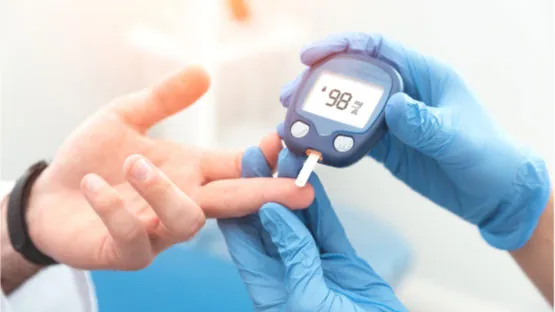A team of researchers led by Dr. Jeffrey Millman at Washington University may be a step closer to a potential solution to diabetes, according to the results of a new study in which replacement beta cells were given to mice.
What is diabetes?
Diabetes is a disease that occurs when blood glucose levels are constantly too high. Blood glucose is the main source of energy for the body and comes from the nutrients we eat. Insulin is a hormone created in the pancreas that allows our cells to use glucose for energy.
Unfortunately, sometimes the body does not make enough or even any insulin, and even when it does, it does not always manage it effectively. The result of this is that the glucose remains in the blood, and, over time, having elevated levels of glucose in the bloodstream can lead to health problems.
There are two main types of diabetes. In type 1, the body does not make insulin at all because the immune system attacks and destroys the beta cells in the pancreas that produce insulin. This form of diabetes is most common in children and young adults, although it can occur later in life also. People with type 1 diabetes must take insulin daily to remain alive.
In type 2, the body does not produce or manage insulin efficiently. Aging, and the resulting metabolic decline and failure, is a common reason why type 2 diabetes develops. Type 2 is most commonly encountered in middle-aged or older people and is the most common form of diabetes.
Replacing lost beta cells
Insulin is produced by the beta cells residing in the pancreas. In type 1 diabetes, these cells are destroyed by the immune system, and in type 2, they do not produce enough insulin. The condition is typically managed by introducing insulin into the bloodstream or using drugs to increase insulin production.
However, in recent years, researchers have been working on ways to replace the missing beta cells and the insulin they produce by converting stem cells into beta cells. These researchers previously demonstrated that giving diabetic mice new beta cells helped to improve the condition [1], and their follow-up study has produced even more promising results by refining the technique [2].
In the past, one barrier to an effective cell therapy has been in the conversion of stem cells to beta cells, as the transformation does not always go as planned. In any given batch of stem cells that are being reprogrammed into other cell types, there are often a number that go wrong and turn into another cell type. The process becomes less efficient the more of these conversion errors there are, and while they are generally not dangerous, it does mean that a larger batch of cells must be used, which makes it more costly. In other words, if a quarter of the batch of stem cells fails to convert properly, it makes the task 25% harder and more expensive.
The research team focused on making the therapy more efficient by reducing the number of off-target cells produced during the conversion process. They targeted the cytoskeleton, the supporting structure that gives cells their shape, to help increase the beta cell yield during conversion. Not only did this reduce the amount of off-target cell types produced in a batch, the beta cells produced were also functionally superior.
Finally, the research team gave diabetic mice these new higher-quality beta cells, which caused their blood sugar to levels normalize and caused their diabetes to be “functionally cured” for a period of up to nine months.
Generation of pancreatic β cells from human pluripotent stem cells (hPSCs) holds promise as a cell replacement therapy for diabetes. In this study, we establish a link between the state of the actin cytoskeleton and the expression of pancreatic transcription factors that drive pancreatic lineage specification. Bulk and single-cell RNA sequencing demonstrated that different degrees of actin polymerization biased cells toward various endodermal lineages and that conditions favoring a polymerized cytoskeleton strongly inhibited neurogenin 3-induced endocrine differentiation. Using latrunculin A to depolymerize the cytoskeleton during endocrine induction, we developed a two-dimensional differentiation protocol for generating human pluripotent stem-cell-derived β (SC-β) cells with improved in vitro and in vivo function. SC-β cells differentiated from four hPSC lines exhibited first- and second-phase dynamic glucose-stimulated insulin secretion. Transplantation of islet-sized aggregates of these cells rapidly reversed severe preexisting diabetes in mice at a rate close to that of human islets and maintained normoglycemia for at least 9 months.
Conclusion
As always with these kinds of studies, the caveat is this is an animal trial, so the results may not necessarily translate to humans, and even if they do, it could take considerable time before they get through human clinical trials.
That said, this is an exciting approach that could be a gamechanger if it can be made to work in humans as it has in mice. Meanwhile, the researchers will be moving forward and testing the approach in larger animals, eventually progressing to human clinical trials.
Literature
[1] Millman, J. R., & Pagliuca, F. W. (2017). Autologous pluripotent stem cell–derived β-like cells for diabetes cellular therapy. Diabetes, 66(5), 1111-1120.
[2] Hogrebe, N. J., Augsornworawat, P., Maxwell, K. G., Velazco-Cruz, L., & Millman, J. R. (2020). Targeting the cytoskeleton to direct pancreatic differentiation of human pluripotent stem cells. Nature Biotechnology, 1-11.




